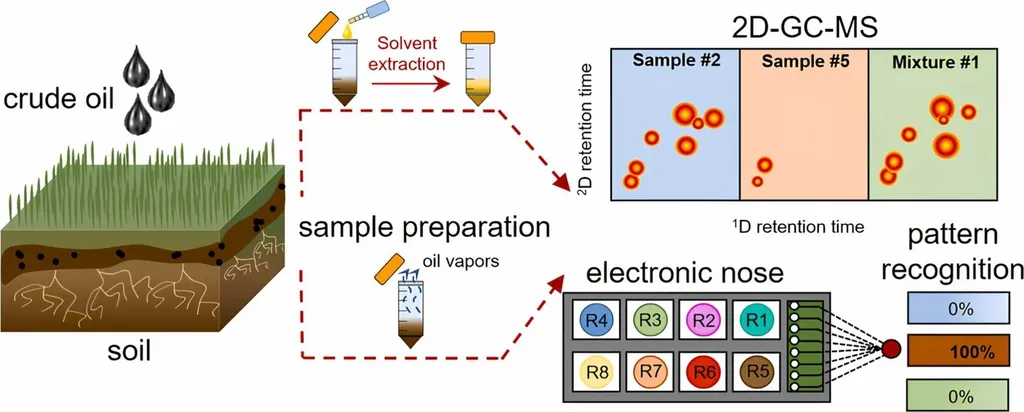In the heart of agricultural operations, where the air is often thick with a mix of gases, monitoring ammonia levels has long been a challenge. Ammonia, a critical component in agricultural emissions, can coexist with other gases like carbon dioxide, methane, and hydrogen sulfide, making accurate detection a complex task. However, a recent study published in *Scientific Reports* offers a promising solution through enhanced electronic nose (e-nose) systems, potentially revolutionizing how farmers and agritech companies approach gas monitoring.
The research, led by Mengying Du from the Henan International Joint Laboratory of Laser Technology in Agriculture Sciences at Henan Agricultural University, focuses on the cross-sensitivity issues inherent in semiconductor-based gas sensors. These sensors, while useful, often struggle with accuracy due to their sensitivity to multiple gases. Du and her team have developed a strategy to mitigate this issue using convolutional neural networks (CNNs) for sensor data fusion.
The study reveals that tungsten trioxide (WO3)-based sensors exhibit strong selectivity for ammonia, with response ratios of 7.3:1 against methane and 17.8:1 against hydrogen sulfide. This selectivity is further supported by density functional theory (DFT) analysis, which confirmed that the WO3 sensor exhibited the strongest ammonia binding energy. “The WO3 sensor’s ability to bind ammonia more strongly than other gases is a significant breakthrough,” Du explains. “This selectivity is crucial for accurate ammonia detection in complex agricultural environments.”
The researchers also quantified measurement uncertainties under varying humidity and temperature conditions, ensuring the system’s reliability in real-world scenarios. A quasi-2D sensor array improved ammonia classification accuracy to 96.4%, a substantial increase from previous methods. Additionally, long-term stability tests showed that tin dioxide (SnO2) sensors maintained a low baseline drift, outperforming other sensors in the array.
One of the most innovative aspects of this research is the use of CNNs to analyze multi-sensor time-series data. The CNN model achieved 91.7% accuracy in mixed-gas environments, capturing non-linear response patterns that ensure reliable ammonia quantification despite interferents. “The CNN model’s ability to handle complex data sets is a game-changer,” says Du. “It allows us to accurately quantify ammonia levels even when other gases are present, which is a common challenge in agricultural settings.”
The commercial implications of this research are significant. Accurate ammonia monitoring can help farmers optimize fertilizer use, reduce environmental impact, and improve livestock management. Agritech companies can integrate these enhanced e-nose systems into their existing technologies, providing farmers with real-time data to make informed decisions. “This technology has the potential to transform agricultural practices,” Du notes. “By providing precise and reliable ammonia detection, we can help farmers optimize their operations and reduce their environmental footprint.”
As the agricultural sector continues to evolve, the need for advanced monitoring technologies becomes increasingly apparent. The research by Du and her team represents a significant step forward in this field, offering a solution that addresses key challenges of cross-sensitivity and environmental stability. With further development and commercialization, these enhanced e-nose systems could become a standard tool in agricultural emission monitoring, shaping the future of sustainable farming practices.

